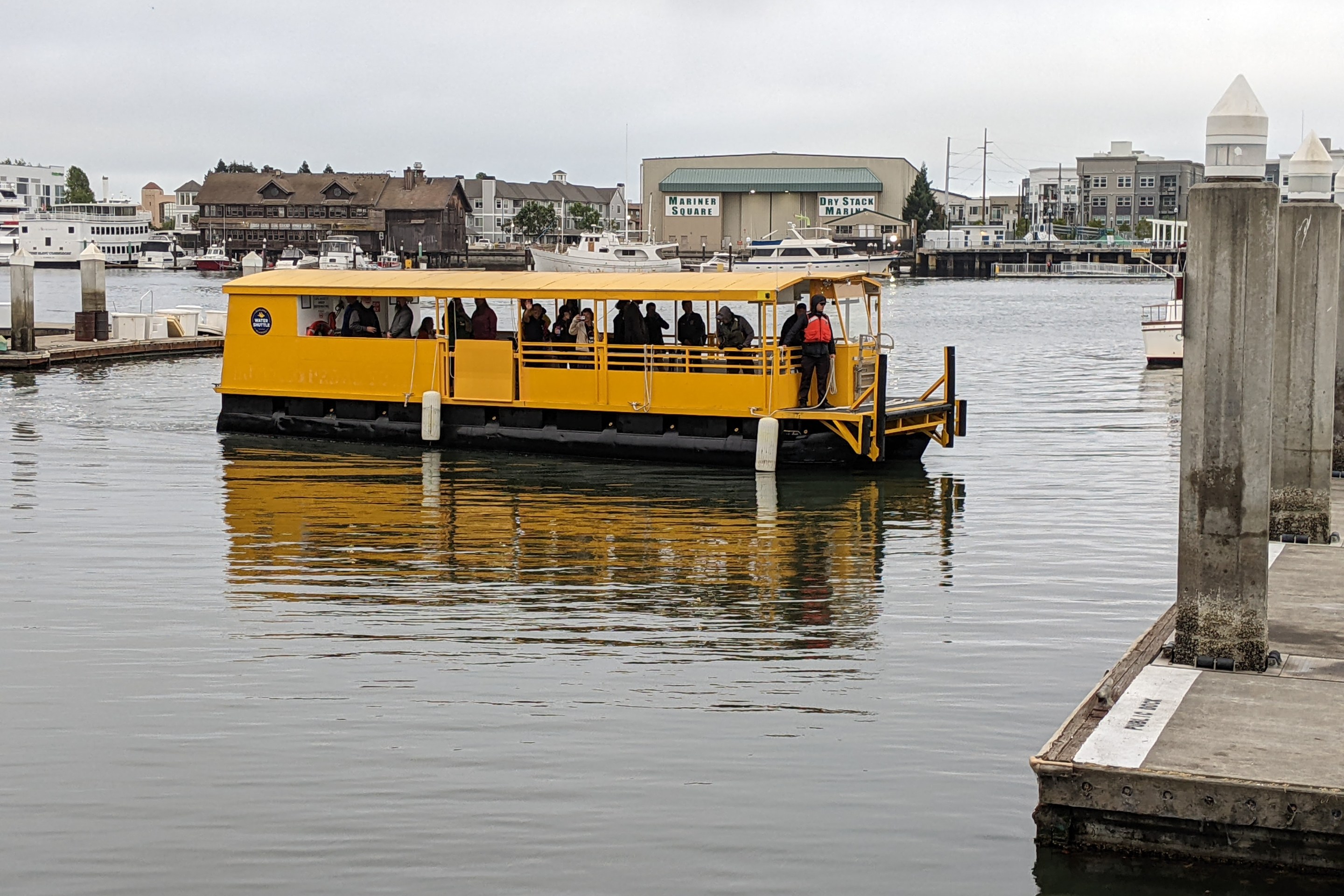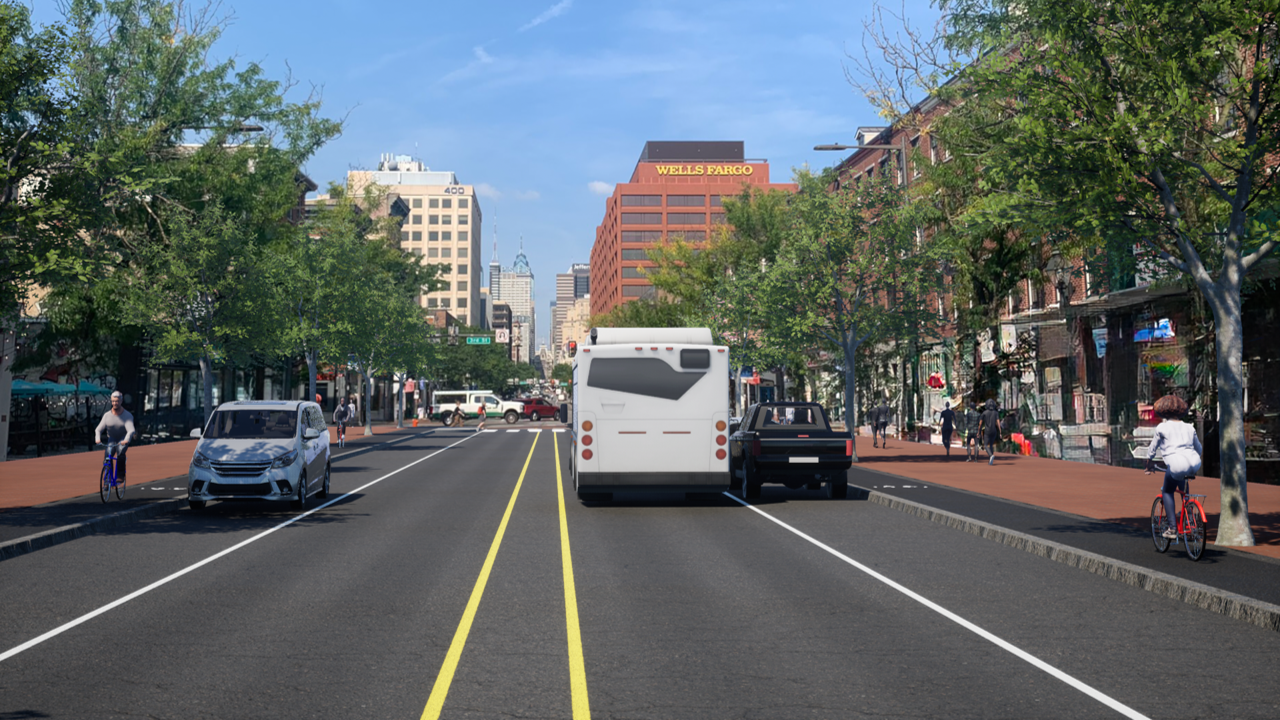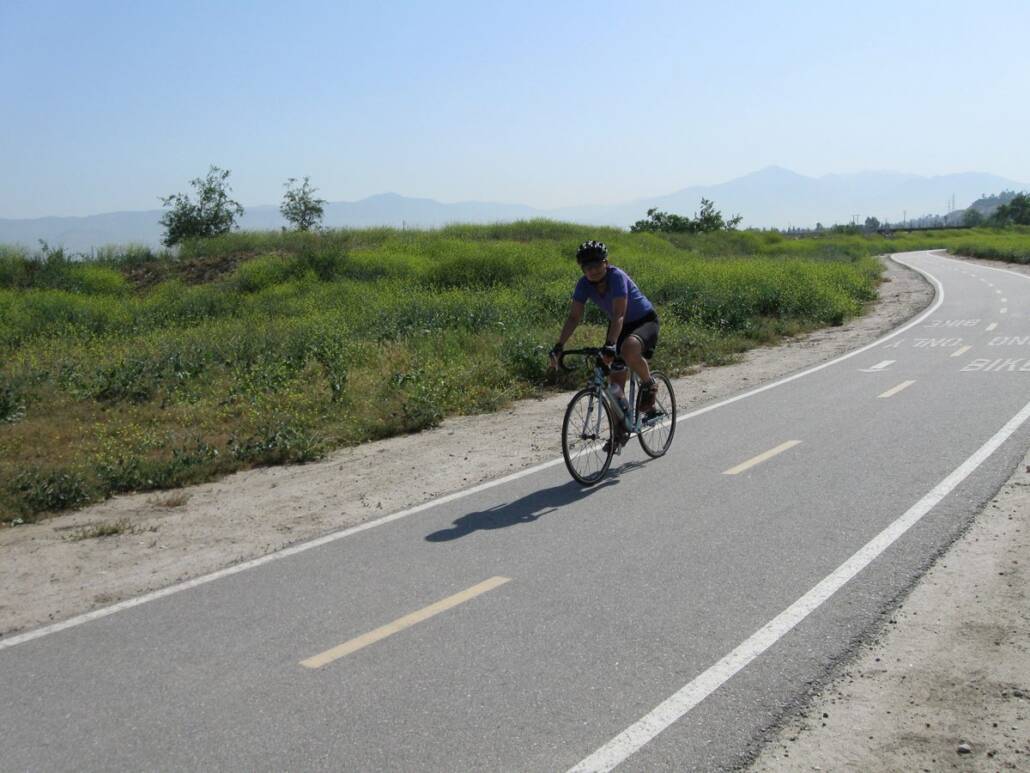 A pedestrian crosses Van Ness Avenue, wary of a driver who seemingly intends to switch into the left lane. Photos: Bryan Goebel
A pedestrian crosses Van Ness Avenue, wary of a driver who seemingly intends to switch into the left lane. Photos: Bryan GoebelDetails are still trickling in about last Tuesday's hit-and-run crash near the intersection of Van Ness Avenue and California Street that left a 31-year-old San Francisco woman in the hospital with life-threatening injuries, but a visit to the intersection revealed plenty of hazards to pedestrians that could easily result in future injuries.
Crossing Van Ness was made especially harrowing by cars blocking the crosswalk, with some drivers seeming intent on changing lanes to move forward, as pedestrians weaved between bumpers to reach the opposite sidewalk. The crosswalk paint was worn to the point of appearing striped instead of solid, which might contribute to motorists' disregard for the crosswalk space.
MTA spokesperson Judson True said pedestrian countdown signals have
been installed recently at many intersections on Van Ness, but they've
yet to be added at Van Ness and California. "We're also going to take a look at the crossing time for pedestrians," said True, who added the MTA is looking into the possibility of "an all-red pedestrian head-start at the intersection."
As Manish Champsee of Walk San Francisco points out, the intersection is very wide, with rounded corners, creating a dangerous situation for pedestrians.
Pi Ra of the Senior Action Network agrees. "It's a very wide street, one of your traffic sewage lines," said Ra. "It's designed for cars. That's a design flaw." Ultimately, he said, "It's just not pedestrian friendly."
It's not that the MTA has simply overlooked pedestrian needs on Van Ness, said Champsee. The problem may be that Van Ness is scheduled for major pedestrian improvements with Bus Rapid Transit hopefully on the way, which might discourage major changes from being made in the meantime. That's not likely to begin happening until 2012 or 2013, so Van Ness could have to wait several years to see changes.
See more pictures of the intersection's hazards and read about what's being done after the jump.
 It's a wide street, and pedestrians often find themselves out of time when they cross.
It's a wide street, and pedestrians often find themselves out of time when they cross. One significant change already has happened: as of January 1st of this year, Van Ness Avenue from Golden Gate Street to Lombard Street is a double-fine zone. Along with 19th Avenue in the Sunset, all traffic fines are doubled in the area, as a result of legislation introduced by State Senator Leland Yee. Current statistics for Van Ness weren't available, but 19th Avenue has already seen a major drop in collisions.
The catch, said Champsee, is that Van Ness is the baseline for the double-fine zone experiment, while 19th Avenue is receiving many additional safety enhancements. On 19th Avenue, said Champsee, "there's going to be more police presence. There's going to be some streetscape improvements, and stuff like that. Then what they want to do is kind of compare what happened along 19th Avenue with what happened along Van Ness. The hope is, between the two, they will figure out what the effect of the double-fine zone was relative to other factors."
Some pedestrian-friendly features do exist at Van Ness and California: two corners have small bulbouts, and the medians on Van Ness have pedestrian refuges, a necessity given the width of the intersection. Without knowing the full details of Tuesday's hit-and-run crash, it's impossible to attribute it to the engineering of the intersection. As Ra points out, even if the motorist wasn't at fault, "some people just panic and take off" anyway. But the question remains open as to what can be done right away to prevent further injuries.

 A pedestrian takes refuge on the median.
A pedestrian takes refuge on the median. 




